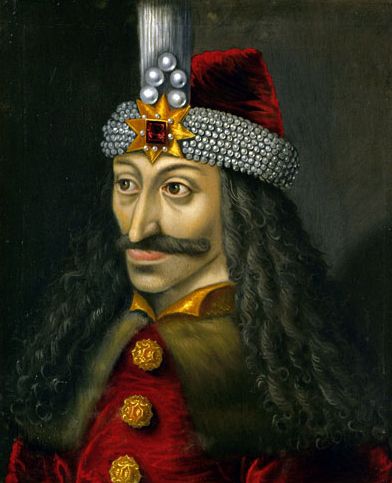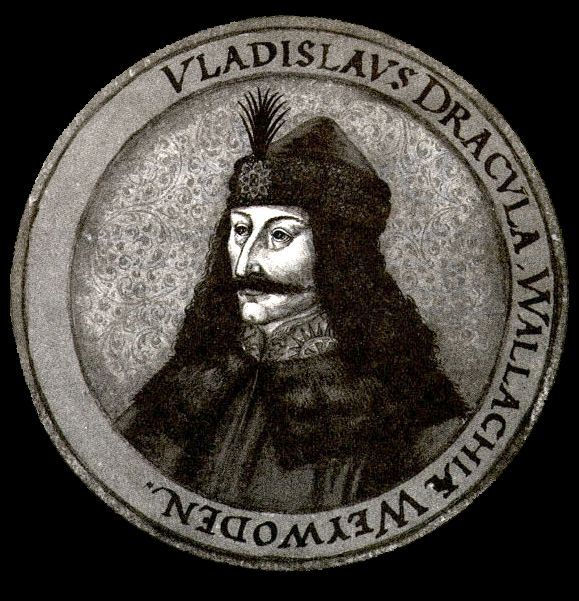Vlad III Dracul - Vampire Count Dracula
Among the many tales from history, notorious reign of Vlad III, Prince of Wallachia (1431-1476) still chills the blood of historians, people of Bulgaria, and the Slavic people who incorporated his legacy and notoriety into one of their most famous folklore myths - the legendary Vampir! The defender of a Christian faith, savior of the Romanian people, bane to the Turkish invaders, and a monster that proved as a source of inspiration for creation of one of the most recognizable and evil characters in our literature - Count Dracula.
Born in the Transylvania as a son of noble family, Vlad soon discovered how harsh and violent our world can be. As one of the central points of the Turkish invasion into Christian territory, his father Vlad II Dracul and other noblemen formed the order of Dracul (Dragon) with a goal to unite their armies in the defense of Christianity. Ever since his young age, Vlad was known as Dracula, or son of a dragon. Surrounded by constant warfare, treachery, bribes and revenge, young Dracula soon forged himself into a weapon of faith, determined to protect his lands against the hordes of Muslim Ottoman Empire. Backed by the Austrian Hapsburgs and Roman Church, he led several campaigns against the Turks, exercising inhuman amounts of violence and revenge upon captured soldiers. Even though staking captives on a pole and leaving them to die in agony was not uncommon in those days, Dracula knew no limits. Remembering the murder of his father, and the gruesome way his brother was killed (first blinded by a red hot iron, staked and then burned alive), he showed no mercy for his captives.
Dracula managed to lose his throne once from his brother, recaptured it after his death, and managed to protect his land of Walachia and Transylvania from the Turks. Even though Vatican praised him as a true defender of Christianity, they too quickly saw that he cannot be reasoned with. Tales of his conquest soon gave him the name Vlad Tepes, or Vlad the Impaler. It was said that during his reign he staked between 40 and 100 thousand men, women and children, in addition of burning countless villages, towns and fortresses to the ground. One of the most famous tales that is remembered about him comes from the writings of Mehmed II, the conqueror of Constantinople, who abandoned his military campaign against the Dracula after witnessing sight of 20 thousand people Muslim people impaled on stakes outside of Vlad's capital of Târgoviște. It was also said that he sometimes dined on a table that was surrounded by hundreds of impaled victims. All of this inhuman behavior came from the belief that souls of his enemies cannot go to heaven if they are not properly buried in the ground. Because of that, he wanted to prolong their suffering by sending them to hell.
Outside of battle he was viewed as a savior of his lands, and a devout Christian who lived much of his life surrounded with priests. During his life he personally founded five monasteries, and his family another 50 all around Romania. Because his military tactics provided safety for the rest of the Europe, many politicians and rules from the central and eastern Europe supported Vlad, and ensured that he stay in power as long as it possible. His most devout supporter was Matthias Corvinus, King of Bohemia, Duke of Austria, and a ruler of Hungary who was first to introduce Renaissance that was during that time born in Italy.
Vlad III, Prince of Wallachia was killed while fighting Turks in 1476 and the following disappearance of his body in 1931 from a History Museum in Bucharest still fuel the imagination of the people around the world. Folklore tales created around him played a big role in Bram Stoker's choice to made him the titular character of his famous book Dracula, and ever since then Vampires became a household name in entire world.

